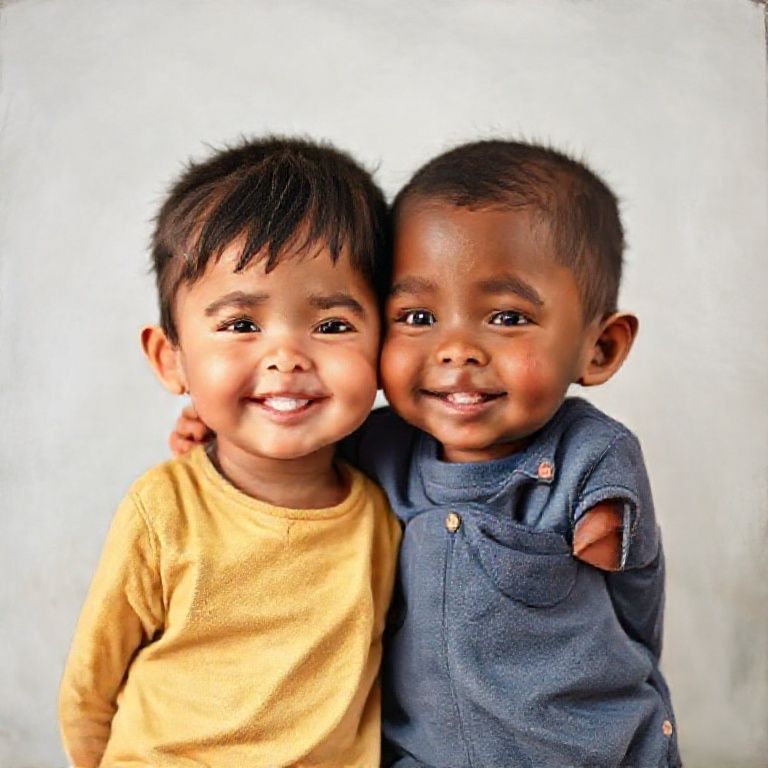Raising children in a bicultural environment is a beautiful and enriching experience. It offers young minds a unique opportunity to embrace multiple perspectives, languages, and traditions. However, this journey is not without its challenges. Parents navigating this path often face unique hurdles as they strive to nurture well-rounded individuals who feel connected to both their heritages.
Understanding these challenges is the first step in overcoming them. By being aware and proactive, parents can create a supportive and loving environment where their bicultural children can thrive. This article explores the biggest hurdles faced by families raising bicultural children and provides practical tips for navigating them successfully.
Language Barriers and Communication
One of the most significant challenges is ensuring fluency in both languages. Children may naturally gravitate towards the dominant language of their environment, potentially neglecting their heritage language. This can create communication gaps within the family and disconnect children from their cultural roots. It’s important to create a language-rich environment at home that actively promotes the use of both languages.
Strategies for Language Development
- Immersion: Create opportunities for immersion in both languages through books, music, movies, and conversations.
- Language Partners: Connect with family members, friends, or tutors who are fluent in the heritage language.
- Consistent Usage: Establish specific times or days for speaking each language at home.
Navigating Cultural Identity
Bicultural children often grapple with questions of identity as they navigate the expectations and values of two distinct cultures. They may feel like they don’t fully belong to either group, leading to feelings of confusion or alienation. Supporting their exploration of both cultures is crucial for developing a strong sense of self.
Fostering Cultural Connection
- Cultural Immersion: Expose your children to cultural traditions, festivals, and celebrations from both heritages.
- Storytelling: Share stories about your family history and cultural background.
- Community Involvement: Connect with cultural organizations and communities that celebrate their heritage.
Dealing with External Pressures and Stereotypes
Bicultural children may encounter stereotypes or biases from others who don’t understand their unique experiences. They might face pressure to conform to one culture over the other, or they may be asked to choose between their identities. Equip them with the tools to address these pressures with confidence and pride.
Building Resilience and Self-Esteem
- Open Communication: Create a safe space for your children to share their experiences and feelings.
- Positive Affirmations: Encourage them to embrace their bicultural identity and celebrate their unique strengths.
- Education and Awareness: Teach them about cultural sensitivity and how to challenge stereotypes.
Balancing Expectations and Values
Different cultures often have differing expectations regarding education, family roles, and personal goals. Parents must find a balance between these expectations while respecting their children’s individual needs and aspirations. Open communication and compromise are key to navigating these differences.
Finding Harmony in Divergent Values
- Family Discussions: Hold regular family meetings to discuss values and expectations.
- Flexibility and Compromise: Be willing to adapt your approach to parenting to accommodate both cultural values and your children’s individual needs.
- Focus on Shared Values: Emphasize the common ground between both cultures, such as respect, family, and hard work.
Conclusion
Raising bicultural children presents unique challenges, but it also offers incredible rewards. By understanding these challenges and actively addressing them, parents can create a nurturing environment where their children can embrace their rich heritage, develop a strong sense of identity, and thrive as global citizens. The key lies in open communication, cultural immersion, and unwavering support for their unique journey.
If you found this article helpful, please share it with other parents raising bicultural children. Your experiences and insights can make a difference!
IMAGE: A heartwarming photo of a mother and her two children, a boy and a girl, in a brightly lit, cozy kitchen. The mother is teaching them how to make traditional Mexican empanadas. The children are smiling and engaged, their hands covered in flour. The scene is filled with warm colors like orange, yellow, and brown, evoking a sense of family, love, and cultural heritage. The style is realistic and candid, capturing a genuine moment of connection.


